How to play eight-string guitar
First lessons in extended-range riffing - with tab and audio!
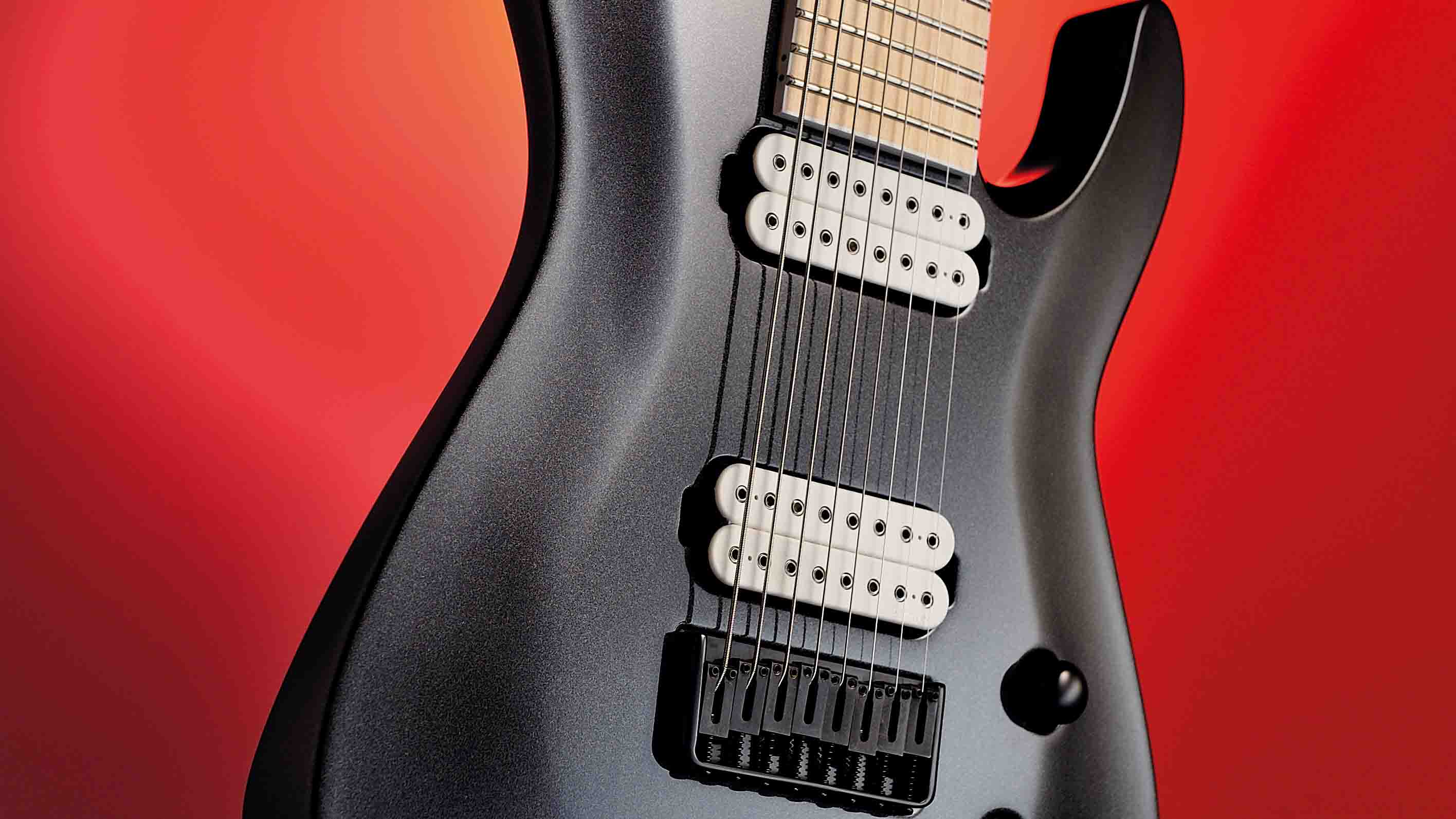
Introduction: eight-string chords
Don’t fear the eight-string with our handy starter guide, covering chords, scales, riffs and more
Eight-string chords
Eight-string tuning (low to high): F# B E A D G B E
The creative potential for chords on the eight-string guitar is huge. The additional range over (or rather, under!) the seven-string makes it ideally suited to wide-interval, almost piano-like chords. And if four fretting fingers are barely enough to play chords on a six-string, with the eight-string, you need to think differently all together.
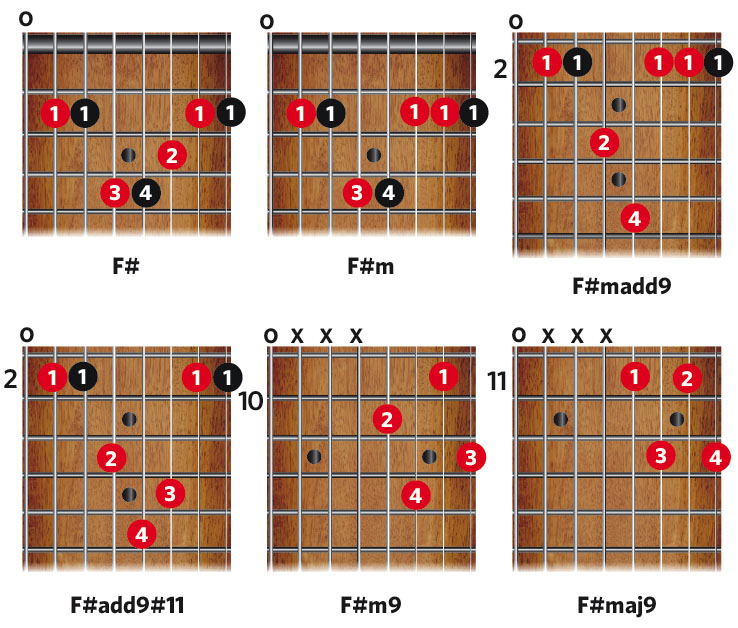
Our first four shapes use a first finger barre across strings one to seven, with the eighth string providing a root note. This leaves your other fingers free to form major and minor triads, plus other extensions that work so well in progressive metal.
The final two chords are in the 12th-fret region, so there is a huge jump between the chord tones and the bass note.
Don't Miss
How to play seven-string guitar
In pictures: an introduction to seven-string and eight-string guitars
Periphery's Misha Mansoor talks seven-strings, eight-strings and Jackson guitars
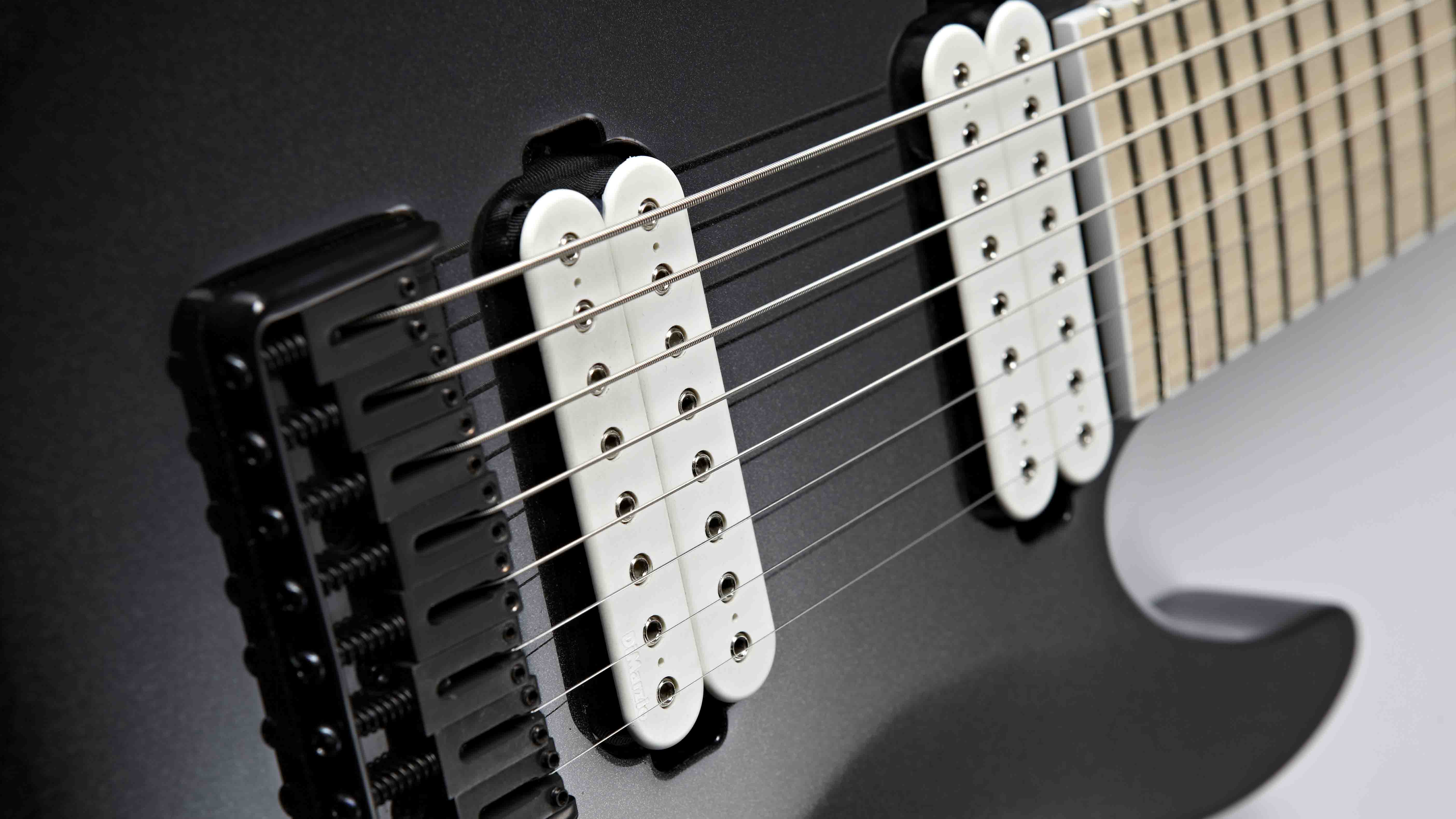
Eight-string scales
You'll likely feel at home on the eight-string once you've learned one or two essential scales, and the natural minor and blues scales are two of the most commonly used scales of all. And, if you know your scales on six-string, then these two shapes may just look familiar as they are essentially six-string shapes, just moved down two strings.
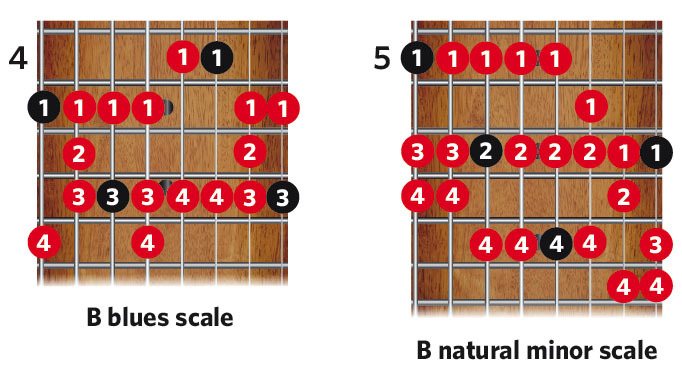
Both shapes cover three full octaves (root notes are black) on the eight-string fretboard and this gives lots of creative possibilities within each shape. We recommend experimenting by mixing high and midrange lead ideas, chords and arpeggios with lower-pitched riff and bassline type lines.
Finally, remember to position your thumb centrally on the back of the neck angled slightly towards the headstock for maximum comfort and reach.
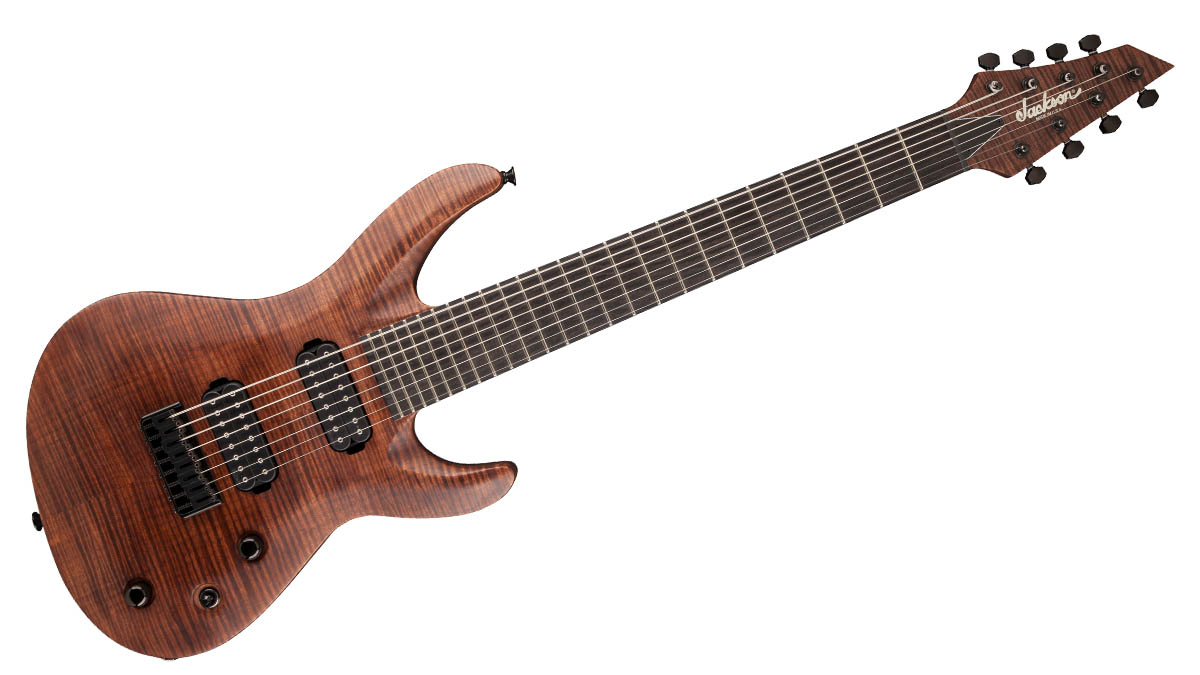
Eight-string riffs
1. Scalic riff
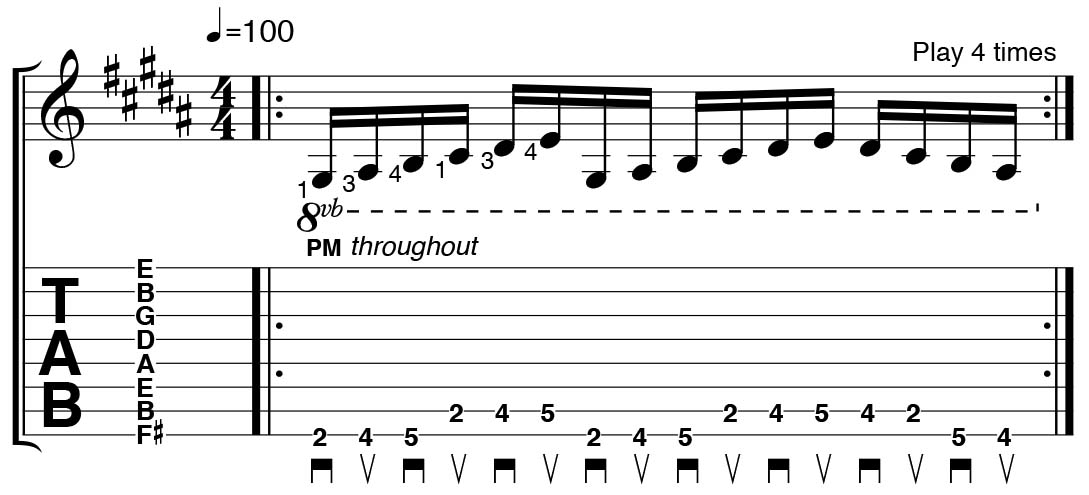
This scale-based riff will get you started with the challenge of fretting the seventh and eighth strings as you manage that sizable stretch across the wider fretboard. Use the very tip of your pick to allow the tone of the strings to come through, otherwise the pick attack can be overpowering.
2. Djenty syncopation and muting
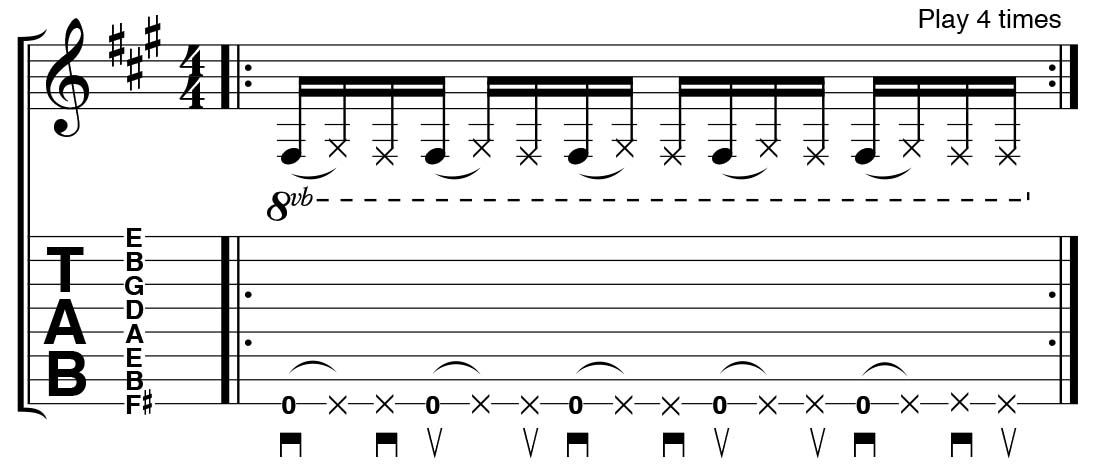
The ‘dj-’ word may be unfashionable, but that onomatopoeic ‘djent’-ing chug is a key eight-string sound. You don’t need to play a powerchord – just the eighth string will do, and this riff exploits that hefty tone. Pick the open string, touch the string for the first X, then re-pick the muted string.
Djenty syncopation and muting tab (fullscreen)
3. Distorted arpeggio
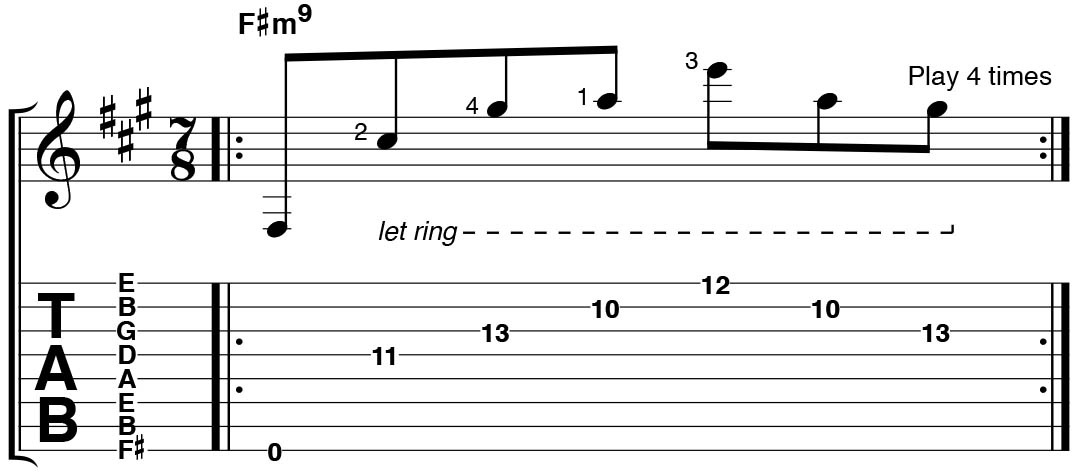
We’re in proggy 7/8 time here, but then prog is a natural home for extended range guitars. The arpeggio starts on the open eighth string F# followed by notes from the F#m9 chord on the top four strings. After playing the low F#, mute the string with your pick hand. The higher notes ring longer.
Distorted arpeggio tab (fullscreen)
4. Clean arpeggio
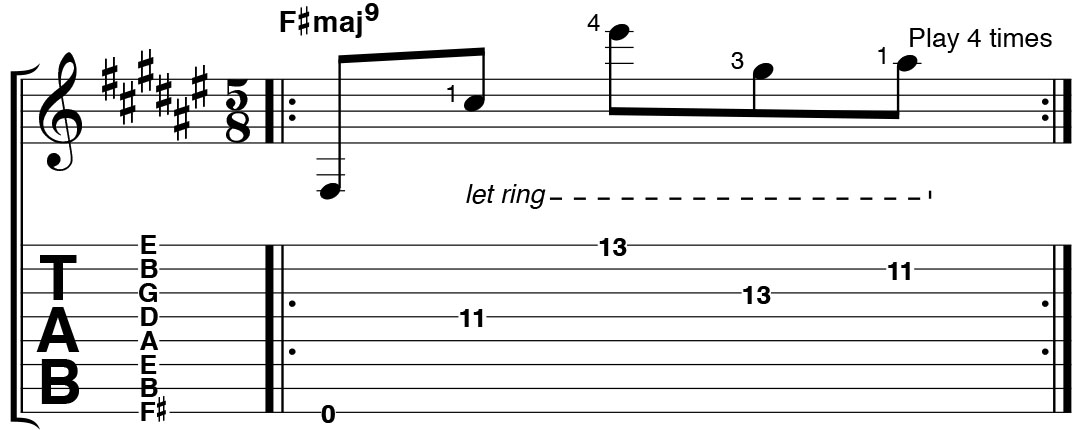
This pattern is based on the F#maj9 chord shape and is best suited to a clean sound as the idea is to let the notes ring together. The repeating pattern is five eighth notes long, but rather than counting to five it is simpler to think of it as two beats, then three beats: ‘1 2, 1 2 3, 1 2, 1 2 3’ and so on.
Clean arpeggio tab (fullscreen)
5. Full-range riff

This tech-metal-style riff uses all eight strings on your guitar, and is based in the F# natural minor scale, roughly outlining 5th intervals as you cross the fretboard. Pick each note twice: first with a downstroke, then an upstroke. Make string changes cleaner by curling your pick out away from the plane of the strings with each upstroke; this should minimise the chance of hitting the wrong string when returning downwards.

Misha Mansoor-style eight-string riff
The open eighth-string F# notes are the most crucial element to this Bulb-style riff. Keep the notes short and staccato by immediately muting them with the flat of your fretting hand fingers; touch the strings lightly and aim for total silence without any percussive sounds during the rests. It’s all about that fat low note and the spaces in between.
Follow the pick directions in bar 1; this will help you nail the timing. Misha’s mellow moments will often include some unusual chords, so we’ve opted for a m9 to maj9 change.
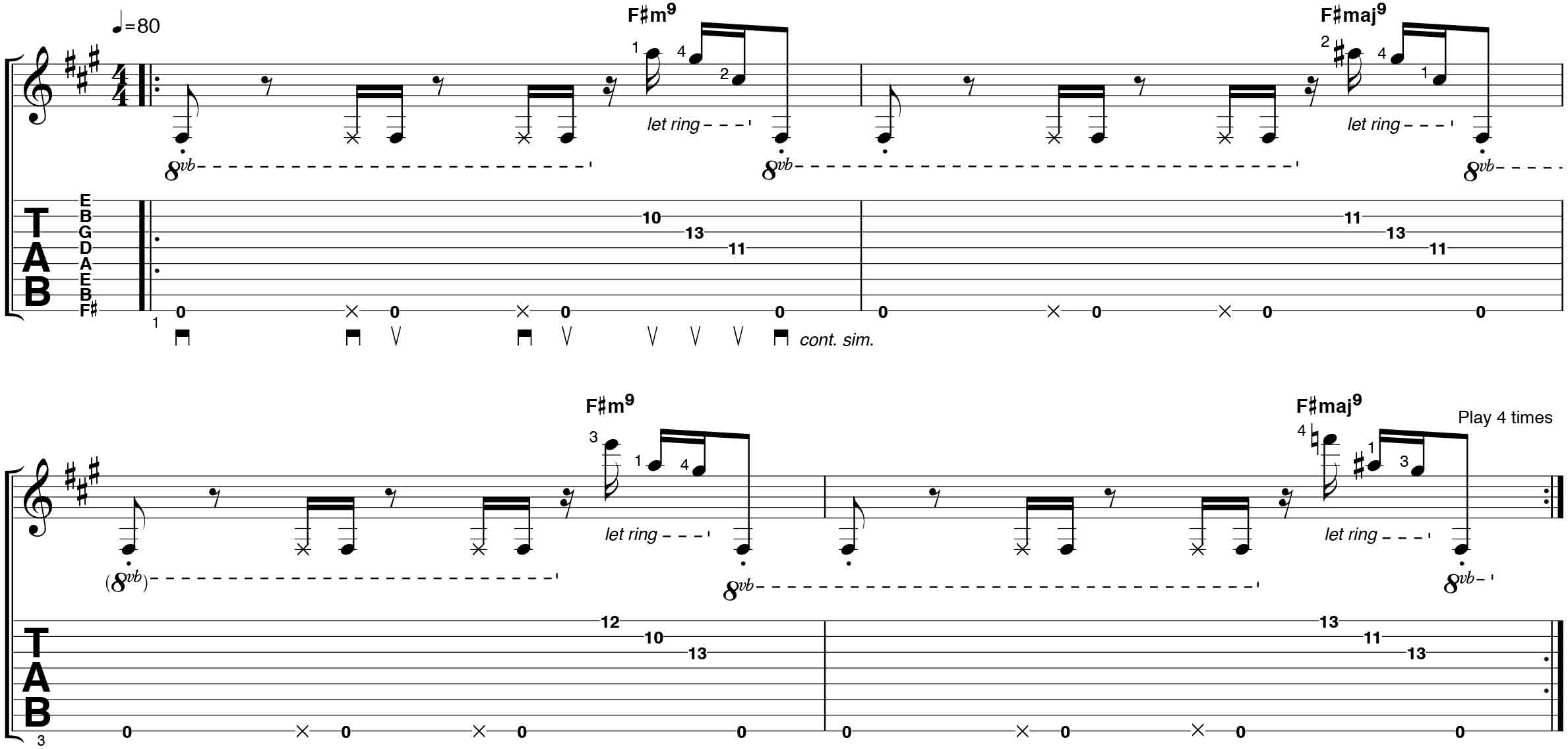
Misha Mansoor-style eight-string riff tab (fullscreen)
Don't Miss
How to play seven-string guitar
In pictures: an introduction to seven-string and eight-string guitars
Periphery's Misha Mansoor talks seven-strings, eight-strings and Jackson guitars
Total Guitar is Europe's best-selling guitar magazine.
Every month we feature interviews with the biggest names and hottest new acts in guitar land, plus Guest Lessons from the stars.
Finally, our Rocked & Rated section is the place to go for reviews, round-ups and help setting up your guitars and gear.
Subscribe: http://bit.ly/totalguitar
